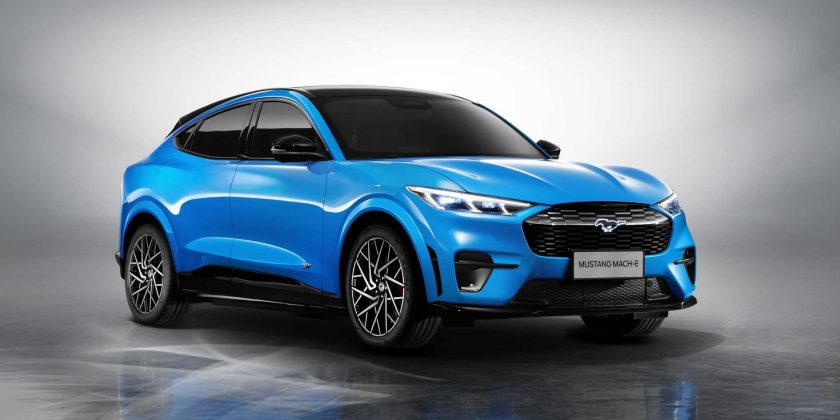Many car brands are adopting OTA updates, but they aren’t used for major updates, but rather minor bug fixes.
This article comes to us courtesy of EVANNEX, which makes and sells aftermarket Tesla accessories. The opinions expressed therein are not necessarily our own at InsideEVs, nor have we been paid by EVANNEX to publish these articles. We find the company’s perspective as an aftermarket supplier of Tesla accessories interesting and are happy to share its content free of charge. Enjoy!
Posted on EVANNEX on February 06, 2021 by Denis Gurskiy
Over-the-air (OTA) software updates are fast-becoming an important part of the car ownership experience. For years, Tesla has been implementing OTA software updates ranging from small bug fixes to bigger improvements enhancing vehicle performance and range. Can the Mustang Mach-E replicate Tesla’s approach?
 |
Clearly, no other automaker has used OTA software updates to the extent that Tesla has — but soon we’ll see this much-appreciated feature emerge from other automakers. One real-world example is the all-electric Ford Mustang Mach-E which has OTA software updates definitively planned during the automaker’s upcoming rollout.
To that end, the Mach-E has (indeed) finally been released, albeit in a rather small quantities at this stage. Ford’s entry into the electric car market should demonstrate (or disprove) how a Detroit automaker can tangle with Tesla. Sure, Ford has remained a behemoth in the auto world for over a century now, but they now need to compete with Tesla on their own turf.
The current shift in the automotive space is far bigger than replacing an internal combustion engine and gasoline with an electric motor and battery pack. We’re seeing massive changes in how we buy cars, where we “refuel” them, and a higher premium placed on the tech and software offered in today’s new cars.
Of course, there’s a growing need to demonstrate a user-friendly UI and a better software experience. This will impact car-buying decisions in the years to come as screens move to dominate the dashboards of the future.
Tesla has set the standard for vehicle software at this point. The Silicon Valley automaker is continually providing new software updates that fix not only bugs, but adds nifty new features. You might not think that playing video games, watching Netflix, and singing karaoke inside your car is essential but it certainly gives Tesla some personality.
https://www.youtube.com/embed/NfMtONBK8dY
Above: A look back at some of the unusual goodies delivered in a typical Tesla software update (YouTube: Tesla)
Tesla’s OTA software updates have also resulted in tangible increases to the overall performance of its cars. One prime example was pushed out to owners of the Performance Model S which allowed the car to lower itself via its suspension and assume a “cheetah” stance. The lower stance plus increased power allowed the Tesla to shave off 0.1 seconds from its 0-60 time.
In addition, Tesla has released OTA software updates, multiple times, that have improved the range of their cars. Regardless of how you feel about snazzy entertainment features delivered via Tesla’s software updates, it’s hard to argue against performance and range improvements.
I say all of this is to hammer home the point that OTA software updates will be a very important tool for automakers in the future. They shouldn’t only be used for bug fixes. Every time there’s a software update, it’s like Christmas morning for a Tesla owner. As such, it builds continued brand loyalty. Furthermore, it acts as free advertising — spreading some novelty (and news) throughout Tesla’s community of passionate owners.
Meanwhile, no other automaker has (yet) used OTA software updates like Tesla has — but the new Mustang Mach-E might try its hand at providing more interesting updates than what you might expect from Detroit. Ford CEO Jim Farley answered my question regarding Ford’s strategy with OTAs via Twitter, showing support for something more substantial than just bug fixes.
What exactly Ford might deem to be “new features” remains to be seen but it is reassuring to know that the Detroit automaker is looking to better utilize the software experience in the Mach-E. After all, this electric Mustang SUV represents Ford’s next wave of automobiles — and it all starts with the company’s mission-critical, all-new electric car. Props to the pony for galloping into the future.
===
An earlier version of this article appeared on EVBite. EVBite is an electric vehicle specific news site dedicated to keeping consumers up-to-date on any developments in the ever-expanding EV landscape.
Source: Read Full Article
